favorite daughters
AUSTIN, TX - THE NEWEST HOLY CITY OF THRIFTING
WHO CAN WIN THE FAST FASHION DEBATE?
HEMP FABRIC - THE SUSTAINABLE SOLUTION
ego and consumption
how do carrie bradshaw’s abs look like that?
COULD FILLERS BE MORE SUSTAINABLE THAN SKINCARE?
spring 2024 color trends
Porcelain white
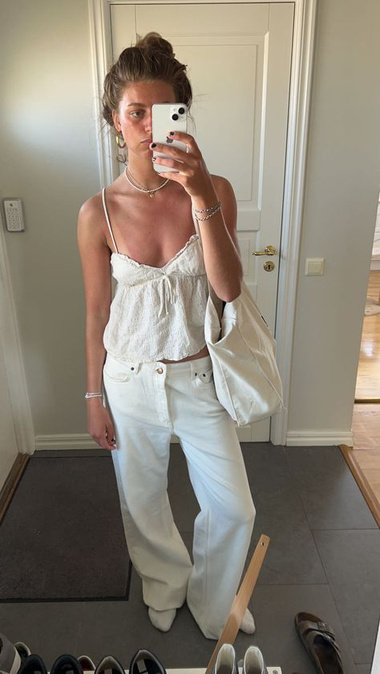
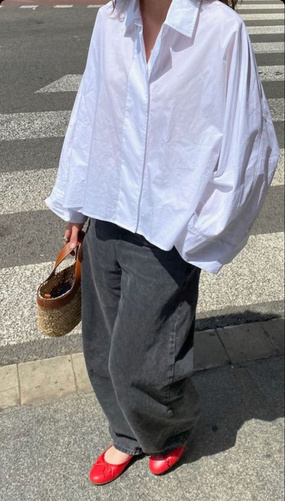
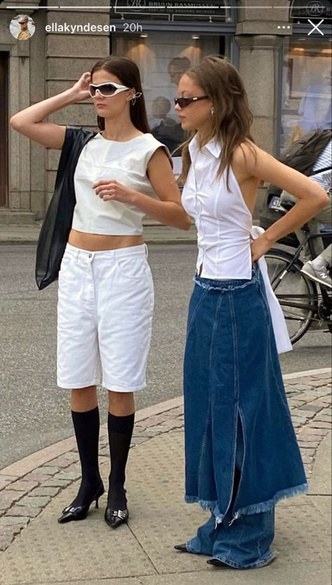

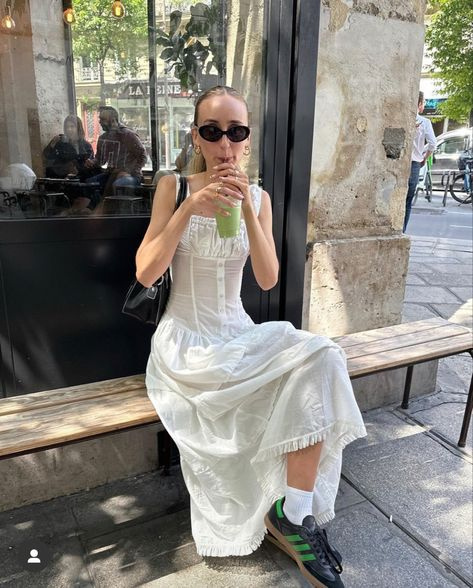
frankies bikinis white dress
light blue
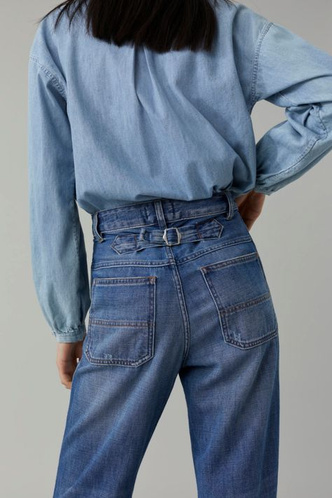
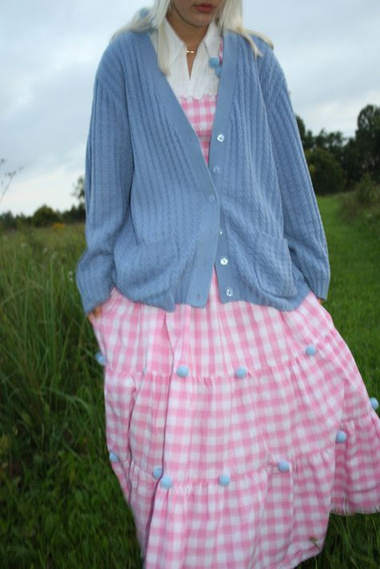
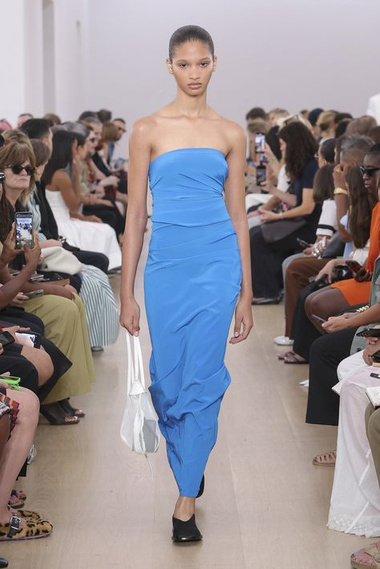

americana red
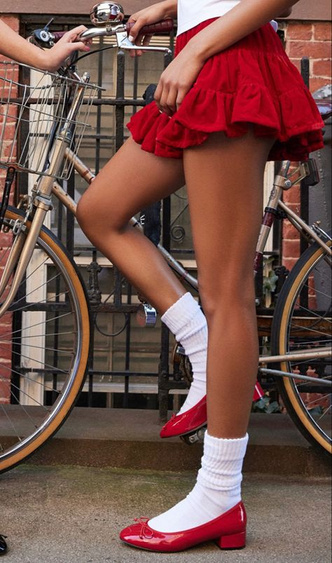
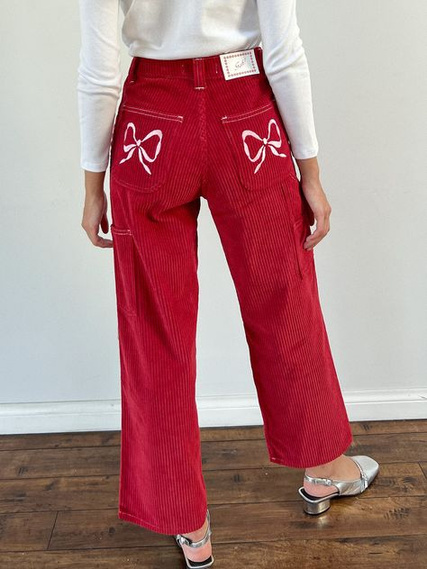
lisa says gah bow pant
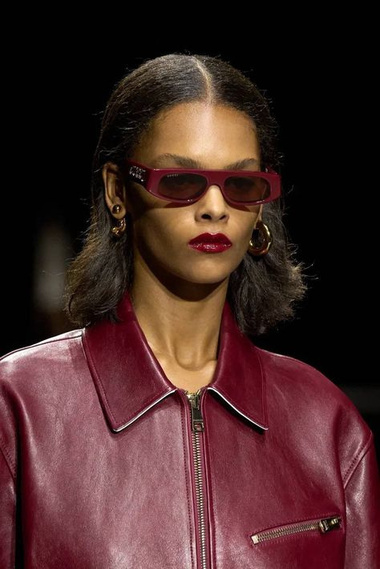
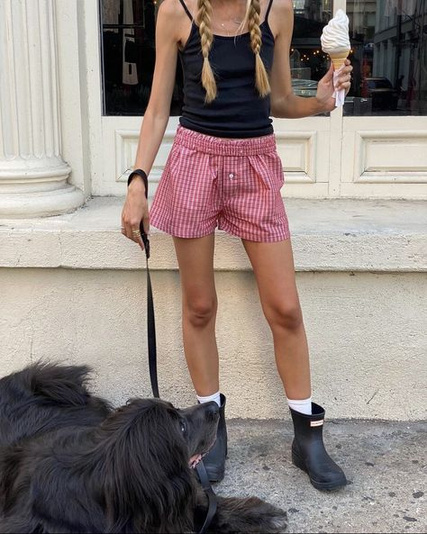
handover boxer short
hint of print
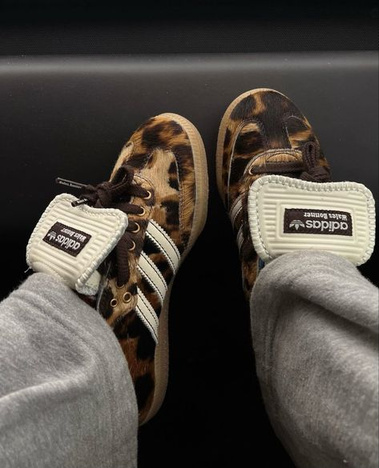
adidas samba x wales bonner
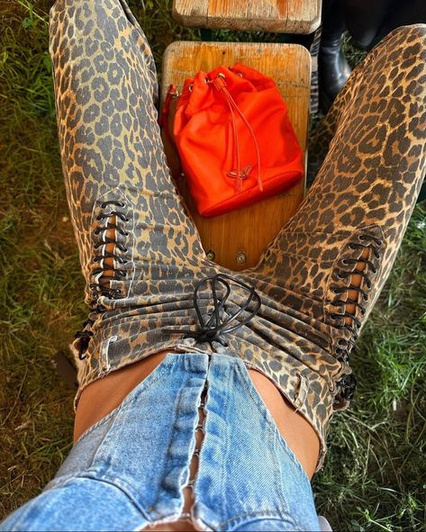

the ultra-wealthy and the aesthetics of the working class
February 20, 2024
By katherine Stothoff
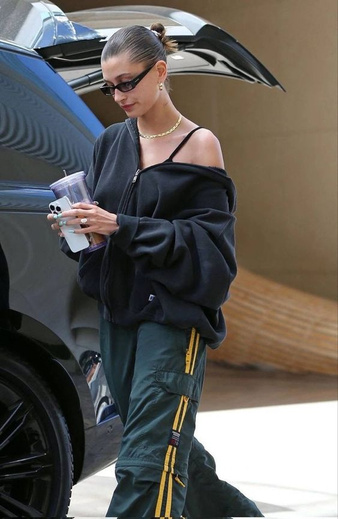
Paparazzi photo of Hailey Bieber
Millennials and Gen-Zers often encounter their grandparents' disapproval when they wear ripped jeans. Comments like, "Why pay more for jeans with holes?" or "You look like your parents won't buy you new clothes," are common. In response, we defend our fashion choices, explaining that the rips are intentional and stylish, not just a sign of wear and tear.
However, the fashion trend of emulating the attire of the less affluent goes beyond just wearing ripped jeans. The emergence of the trend to adopt “poor” attire, which gained momentum in the 1980s, reflected a societal shift away from associating wealth solely with opulence. This shift was driven by various factors, including a desire to convey a narrative of self-made success and a romanticized appreciation for the simplicity of working-class clothing. Additionally, dressing down symbolized a rejection of vanity and a preference for substance over style. However, this trend also underscores a societal paradox, wherein the wealthy are praised for their humility. At the same time, those with limited means face judgment for their modest attire, perpetuating a complex interplay of societal perceptions and double standards.
Recent analyses of today’s ultra-wealthy have brought this concept to the forefront of social media discourse, especially when discussing “nepo-babies” like Hailey Bieber.
The trend of aestheticizing poverty raises concerns for several reasons. Firstly, it enables the affluent to adopt elements of lower-class culture without truly understanding the associated hardships. While some may view it as a form of homage to the working class, in reality, it romanticizes poverty and allows the privileged to selectively embrace certain aspects without experiencing the full spectrum of challenges. Perceiving the struggles of the lower class as merely "stylish" or "inspiring" underscores a profound disconnect; what one group sees as artistic expression, others endure as an unavoidable reality shaped by systemic injustices like racism and cyclical poverty. Figures who profit from this trend, whether through enhanced social status or influence, such as Hailey Bieber, cannot genuinely empathize with the daily realities faced by those living in poverty. Poverty is not a fashion statement or lifestyle choice—it's a harsh reality for millions worldwide, dictated by systemic barriers and intergenerational cycles of disadvantage.
Furthermore, the appropriation of clothing associated with poverty raises significant ethical concerns. It's ironic that while those actually experiencing poverty are often stigmatized, their clothing is being co-opted by the affluent. Shockingly, more than a quarter of impoverished Americans receive no assistance from vital welfare programs, such as food stamps or subsidized housing.
Despite the glaring need, over 13 million individuals from low-income households remain disconnected from these crucial support systems, with nearly a third receiving no benefits from the federal safety net. This disparity is exacerbated by pervasive misconceptions about poverty, as evidenced by the fact that 61 percent of Americans believe the poor are overly reliant on government aid. This prevailing mentality, both within the American government and society at large, reflects a troubling double standard: while dressing like the working class is celebrated as fashionable, actually belonging to that socioeconomic group is often met with disdain. The harsh reality is exemplified by policies like the Trump administration's tightening of working restrictions, which threatened the livelihoods of over 700,000 Americans reliant on food stamps. In a country where the impoverished are constantly forced to prove their worthiness for assistance, mimicking their struggles as a mere fashion statement is not only insensitive but also deeply unjust.
citations
Lam, Sophia. "The Glorification of the Working Class." March 24, 2020
jealousy or sexual awakening? an analysis on maria from the bachelor
February 17, 2024
By katherine Stothoff
A favorite among young women and reality TV fiends everywhere, "The Bachelor" is a reality TV dating show where a single bachelor dates multiple contestants, aiming to find love and propose by the season's end. This season, discourse on social media platforms has reached an all-time high centered around the reactions of contestants to one woman, Maria Georgas.
The dynamics shifted when Maria received the coveted first impression rose, sparking a wave of apprehension among contestants who perceived her as a formidable rival for Joey's affections. Following Syndey's lead, Lea and Jess have now also become embroiled in the unfolding drama, adding layers of complexity to the situation. Following the episode's broadcast, viewers of The Bachelor speculated that the other contestants harbored jealousy towards Maria. On Reddit and TikTok, some remarked, that they were acting like vultures, clearly intimidated by her bond with Joey and her genuine authenticity.
Throughout human evolution, women have gained advantages by engaging in competition with same-sex rivals for mates. Emerging victorious in these rivalries can result in direct benefits, like obtaining an attractive, healthy partner capable of investing in a relationship and possessing valuable resources for supporting future offspring. However, such competition also carries risks, including jeopardizing alliances, facing social victimization, being subjected to gossip, and, in the event of defeat, squandering time and effort that could have been utilized elsewhere. (Fisher, 2022)

According to Buunk and Dijkstra, research has shown that in women, jealousy is “evoked more by a rival's physical attractiveness” than in men. Particular emphasis is placed on competition related to physical allure, specifically women's endeavors to enhance their attractiveness, as men universally favor appealing partners. This rivalry often employs tactics of indirect aggression, with women strategically adjusting their behavior based on local factors like the availability of mates, the perceived value of competitors, and the desire to uphold their reputation.
So, is it really just jealousy? Or something deeper? TikTok user @horsegirl4246 seems to think that the bachelor girls are “experiencing gay feelings for the first time, therefore crucifying Maria.” She goes on to state that these contestants may be more attracted to Maria than they are to Joey, and do not know how to hold space for those feelings. These sentiments are shared by other users, some stating that Syndey “straight up stated that she spends more time thinking about Maria than she does Joey.”
Maria and Joey when she first exited the limo by Disney/John Fleenor
And there may be some truth in @horsegirl4246's sentiment. As we mature, societal values become ingrained in us. In a culture that's homophobic and heterosexist, individuals may internalize negative perceptions of homosexuality and same-sex attraction. LGBTQ+ individuals, like others, might internalize beliefs that being non-heterosexual is abnormal or immoral, fostering self-loathing, self-disgust, and in some cases, outward aggression. This internalized negativity is termed "internalized homophobia." Internalized homophobia is further characterized by an intrapsychic conflict between experiences of same-sex affection or desire and feeling a need to be heterosexual. Not only can this be mentally detrimental, but it can also increase strain in same-sex relationships.
When considering the conflicts among contestants involving Maria from this perspective, it becomes plausible that their negative reactions and aggression towards her might be rooted in internalized homophobia. Indeed, much of their discontent with her appears to be founded on presumption rather than evidence. For example, Sydney inferred from a fragmented conversation that Maria was disparaging Medina, subsequently tarnishing Maria's reputation among the other contestants. Despite the revelation of the misunderstanding, Sydney persisted in her conviction that Maria was the antagonist, prompting others like Lea and Jess to echo her sentiments, further slandering Maria's character.
Unfortunately for Sydney, Lea, and Jess, their sentiments did not translate to The Bachelor’s audience resulting in criticism and hate throughout social media. From the outside perspective, it was easy to spot their jealous and insecure natures, as their actions often seemed motivated by competitiveness and the need to undermine others. Nevertheless, it will be subject to ongoing debate and the passage of time to ascertain whether the contentious drama stemmed solely from envy or was a manifestation of homoerotic desire.
Citations
Buunk, B.P. and Dijkstra, P. (2004), Gender differences in rival characteristics that evoke jealousy in response to emotional versus sexual infidelity. Personal Relationships, 11: 395-408. https://doi.org/10.1111/j.1475-6811.2004.00089.x
Fisher, Maryanne L. "Female Intrasexual Competition." Edited by Todd K. Shackelford, Part I - Precopulatory Adaptations, Cambridge University Press, 30 June 2022.
Frost DM, Meyer IH. Internalized Homophobia and Relationship Quality among Lesbians, Gay Men, and Bisexuals. J Couns Psychol. 2009 Jan;56(1):97-109. doi: 10.1037/a0012844. PMID: 20047016; PMCID: PMC2678796.
The Rise, Fall, And rise of the 2014 aesthetic
February 16, 2024
By katherine Stothoff
Thanks to the influence of platforms like TikTok, fashion trends are evolving at an unprecedented pace. Gone are the days when trends lasted for entire decades, as witnessed in the iconic styles of the 70s or the Y2K era. Today, it feels like there's a new trend emerging almost every month, leaving many of us wondering what's next.
Enter the era of indie sleaze—a term coined by Gen Z to capture the essence of the hipster aesthetic. Reminiscent of skinny scarves, metallic accents, and Tumblr grunge vibes, indie sleaze channels a rebellious spirit reminiscent of shows like "Skins" and "Gossip Girl" that defined the early 2000s. Celebrities like M.I.A., Santigold, and Karen O embodied this edgy style, inspiring a generation.
Originally spanning from 2008 to 2014, indie sleaze emerged as a response to the economic recession, marked by smudged makeup, excessive jewelry, and unconventional fashion choices. In the wake of the Great Recession, characterized by economic turmoil and uncertainty, many sought solace in this anti-beauty aesthetic, embracing imperfection in a hyper-filtered world.
Fashion trends often mirror societal sentiments, and the resurgence of indie sleaze reflects our collective desire for escapism and freedom amidst the challenges of the pandemic and economic instability. As we navigate through turbulent times, the way we dress becomes a form of self-expression, capturing our longing for simpler, carefree moments in the face of adversity.
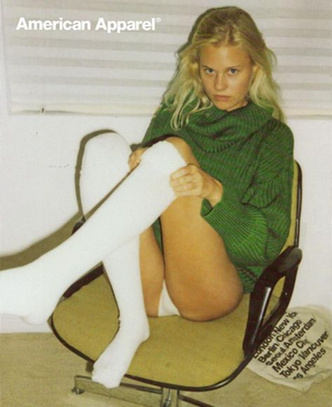
One of the most monumental brands during the heights of 2014 Tumblr was American Apparel. Inspired by a flurry of images characterized by brooding color schemes and often enhanced with dramatic contrasts, this adored yet somber aesthetic captured the essence of everyday melancholy, from deserted streets to distant urban vistas. Evoking a sense of innate nostalgia, these branded advertisements evoked a vintage charm, reminiscent of Polaroids and retro camera effects, with their grainy textures and overexposed filters.
Originally pioneered by millennials, these cultural trends paid homage to '90s grunge, as seen in their penchant for vintage band tees, distressed flannels, and oversized sweatshirts.
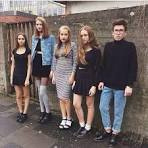
A striking tableau that perfectly encapsulated the essence of 2014's Tumblr zeitgeist depicts a group of teenagers clustered against a cold concrete wall, draped in
somber attire from head to toe. Despite the relentless speculation on platforms like Twitter and Reddit, the true origins of these enigmatic figures remain elusive, leaving behind a mysterious legacy within the depths of this grunge-inspired subculture.
In the rich tapestry of this aesthetic, symbols and nostalgic motifs were carefully woven to evoke a sense of purpose. From cigarettes and black and white flowers to aliens and color-highlighted broken iPhones, the repertoire was vast and varied. While many of these symbols have faded from prominence in contemporary culture, the romanticization of cigarettes and nocturnal imagery continues to resonate in magazines and pop culture.
Notably, Lana Del Rey, with her iconic vintage aesthetic, pays homage to this allure, blending retro cars and lace dresses in a timeless homage to her earlier album concepts.
Fashion trends of yesteryear are experiencing a revival on the bustling streets of today. Renowned trend forecaster Mandy Lee, known as @oldloserinbrooklyn on TikTok, stands witness to this cultural shift. She notes a resurgence of interest in obsolete technology, with a newfound appreciation for vintage cameras, vinyl record players, and classic headphones marking the rise of retro tech as a prevailing trend.
During her video, Mandy highlights the resurgence of mashups reminiscent of the early indie sleaze era, attributing TikTok audios as the catalyst for this revived trend. Within this subculture, music served as a vital tool for crafting one's persona. Numerous bands and artists from the early 2010s have reemerged, including iconic figures like Lorde, Lana Del Rey, and Taylor Swift, who released albums in the early 2020s that reshaped their respective genres and public personas.
The Gen Z cohort embraces a similar sense of nostalgia for 2014 Tumblr and the Y2K era as their younger millennial counterparts did with '90s grunge. Both generations find solace in this nostalgic resurgence of 2014-core, reveling in the comfort of familiar cultural touchstones.
Citations
Kearney, Michael. "Nostalgia in Trends: The 2014 Tumblr Aesthetic Has Returned." Jun 19, 2023.
@oldloserinbrooklyn
2024 SPRING mood board
February 16, 2024
hemp fabric - THE SUSTAINABLE SOLUTION
February 15, 2024
By katherine Stothoff
Overflowing landfills, increased emission rates, and overall global warming have caught the attention of conscious communities everywhere, with fears of species extinction and threats to human health, food security, and our way of life. In response, efforts by sustainable designers are underway to explore solutions, such as implementing regulations for eco-friendly practices, reducing CO2 emissions, and prioritizing renewable resources. One promising resource gaining attention is hemp, known for its versatility, quick growth cycle, and potential to absorb carbon. Here, we will explore hemp's potential to decrease emissions across the fashion and textile industry.
Hemp, an ancient plant originally cultivated for textiles, has a rich history that traces back to western Asia and has since spread worldwide with over 30 countries now involved in its global trade, drawn by its ability to thrive without pesticides, resist pests and weeds, and serve a multitude of purposes. Known for growing well in loose, well-drained soil with moderate temperatures and moisture, hemp requires similar soil preparation to other crops, making it simple for farmers to rotate into their existing crops. Not to mention, hemp is incredibly easy to grow, reaching heights of up to 0.31 meters per week, with a short harvesting period of 70-90 days. Hemp cultivation is becoming ever more attractive due to its low labor requirements and reduced risk of crop failure compared to flax and other natural fibers. Cultivation typically follows organic practices to maintain fiber quality, which boasts unique properties such as antiseptic qualities, high absorbency, UV protection, and hypoallergenic properties. Additionally, hemp cultivation is more cost-effective than cotton production, requiring significantly less resources than other fibers.
So, if hemp is so easy to grow, requires fewer resources, and is more cost-effective than its natural fiber counterparts then why is it shunned? The answer may not surprise you. It’s racism! According to John Hudak in Marijuana: A Short History, throughout the 20th century, politicians from various political factions exploited marijuana as a tool to sow division within America. Depicting the substance as a menace originating from south of the border, a symbol of jazz culture, or the preferred intoxicant of rebellious “beatniks” and “hippies,” both the drug itself and the laws aimed at its regulation tapped into some of America's darkest inclinations regarding race, ethnicity, civil disobedience, and the concept of "otherness."
From its inception, U.S. government officials portrayed cannabis as a nefarious substance, likening it to a clandestine flow across the border akin to immigrants from Mexico. Subsequently, they depicted cannabis as a drug prevalent in inner-city areas and associated it with the Black community, all while propagating falsehoods linking it to heinous crimes like murder, rape, and insanity. Moreover, political adversaries of figures like Richard Nixon and Ronald Reagan crafted and implemented laws targeting various demographics across the nation.
Throughout the course of this narrative, communities of color consistently bore the brunt of the nation's cannabis laws. Despite similar rates of cannabis use between white and non-white individuals, Black Americans are disproportionately arrested for cannabis offenses at a staggering rate of nearly 4:1 compared to their white counterparts.
With nearly 700,000 cannabis-related arrests annually (a figure that surpassed 800,000 just a few years ago), these policies impact a significant portion of the American population.
In recent years, states and localities have taken steps to address these alarming arrest statistics through legalization and decriminalization reforms. While such measures have led to a substantial decrease in arrests in legalized states, racial disparities in arrests persist in many regions. While legalization and decriminalization represent positive strides forward, these policies primarily address current and future issues, leaving the injustices of the past largely unaddressed.
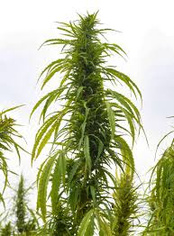
Hemp grows in a field owned by Horizon Hemp Seeds on Wednesday, August 25, 2021, in Willow Lake. Erin Bormett | Argus Leader
Many new up and coming designers have taken a proactive step by integrating hemp into their product range. This conscious decision stems from a commitment to shaping an industry where aesthetics, functionality, and environmental impact are not at odds but can seamlessly align throughout a variety of aesthetics and styles.
Most notably, Patagonia, Hempest, WAMA, and my personal favorite, L’atelier Di Niccolo Calabria.
“L’atelier di Niccolo Calabria” is a design studio based in Italy that “creates whatever it wants”, often using upwards of 60% hemp fabrics.

Hemp's resurgence in various industries, from fashion to construction, signifies a significant shift toward sustainability and environmental consciousness. Its versatile nature, coupled with its eco-friendly properties, positions hemp as a valuable resource for a greener future. As consumers continue to prioritize ethical and environmentally responsible choices, the widespread adoption of hemp-based products promises to play a pivotal role in shaping a more sustainable world.
Citations
Ahmed, A.T.M. Faiz. "Hemp as a Potential Raw Material Toward a Sustainable World: A Review." Heliyon, vol. 8, 2017, article e08753. DOI: 10.1016/j.heliyon.2022.e08753.
Hudak, J. (2024). Marijuana’s racist history shows the need for comprehensive drug reform. Brookings.
ABOUT
Favorite Daughters is a blog-style journal by Katherine Stothoff and Nina Koneru, both San Antonio-based creatives and freelance fashion journalists. This site is a destination for fashion, beauty, and lifestyle stories and was launched in February 2024 as a way to cater to the ever-growing digital audience seeking inspiration, trends, and insider insights into the world of fashion, beauty, and lifestyle.
Nina graduated with a BA in Business from Southwestern University and has started her career as a marketing director in the luxury industry.
Nina gleaned much of her inspiration from studying under esteemed luxury designers in Paris, France, immersing herself in the intricacies of the fashion industry.
Katherine graduated with a BA in Environmental Studies from Southwestern University with a concentration on Sustainability. Katherine furthered her studies in Lugano, Switzerland, gaining insights into various sustainable strategies that nations could adopt. Currently, in her gap year, she is dedicated to exploring sustainable solutions specifically within the fashion industry.
Obviously we are our parent’s favorites.
behind the name
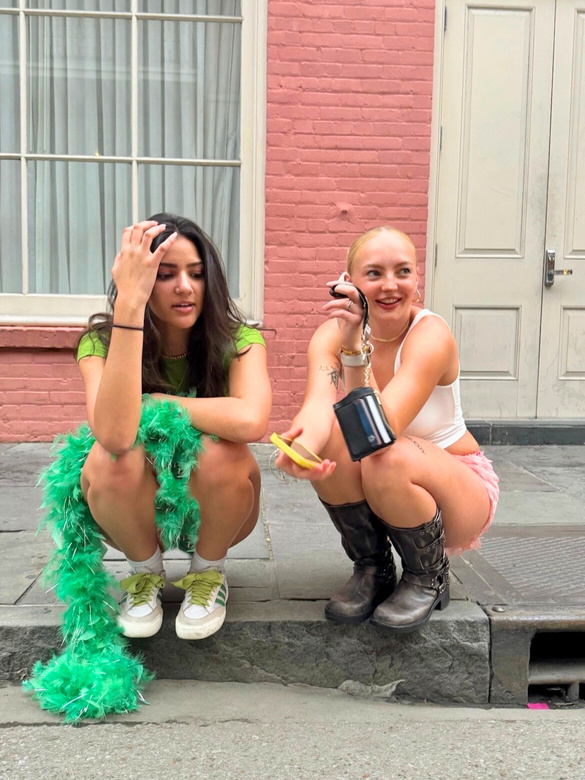
Contact
Podcasts
“Between Good & Evil” with Charolette D’Alessio
youtubers
@lainiozark
discover
our favorites
small businesses
L’atelier Di Niccolo Calabria
Lisa Says Gah
Strawberry Milk Mob
Catbird
mid-range brands
Gentle Monster
Ganni
FARM Rio
Gimaguas
Praying
Frankie’s Bikinis
Entire Studios
Miaou
high-range brands
Pleats Please Issey Miyake
Marni
Doen
Vivienne Westwood
Disclosure: Any paid collaborations, sponsorships, or gifts stay true to favorite daughters and our aesthetics.
This site uses affiliate links. Outbound product links may be monetized via such services.



